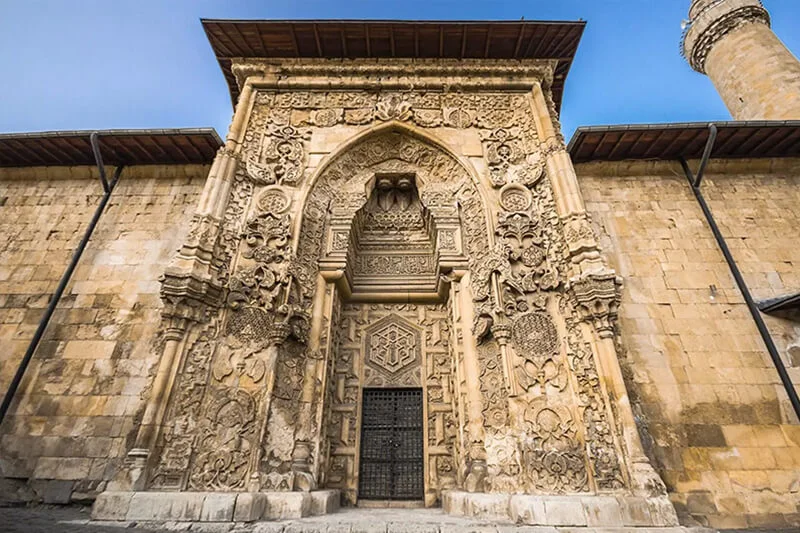The Divriği Mosque, also known as the Great Mosque and Hospital of Divriği, is a remarkable architectural gem located in the town of Divriği in Sivas Province, Turkey. It is recognized as a UNESCO World Heritage Site and is renowned for its intricate stone carvings and unique architectural features.
The Divriği Mosque was constructed in the 13th century, during the reign of the Seljuk Sultanate of Rum. It was commissioned by Ahmet Shah and his wife, Melike Turan Melek, as part of a larger complex that included a hospital, a medical school, and a caravanserai. The complex served as a center for both religious and medical purposes.
The mosque is known for its extraordinary architecture, blending Seljuk and Anatolian architectural styles. It features intricate stone carvings, geometric patterns, and detailed decorations both on the exterior and interior. The mosque has a rectangular plan with a central dome, surrounded by smaller domes and vaults.
The most striking feature of the Divriği Mosque is its elaborately carved portal. The entrance is adorned with intricate stone reliefs depicting geometric patterns, floral motifs, and scenes from Islamic art and culture. The carvings showcase exceptional craftsmanship and attention to detail.
Inside the mosque, you can find a beautifully decorated mihrab (prayer niche) and minbar (pulpit). The mihrab is adorned with ornate calligraphy and geometric designs, while the minbar features delicate carvings and patterns.
The Divriği Mosque boasts a remarkable wooden ceiling, which is considered a masterpiece of Seljuk woodwork. The ceiling is intricately carved and painted with geometric patterns and motifs, creating a stunning visual effect. The Divriği Mosque complex, including the mosque, hospital, and surrounding structures, was inscribed as a UNESCO World Heritage Site in 1985. It is recognized for its outstanding universal value, exceptional architecture, and historical significance.


Comment (0)